#italian synthpop singer and songwriter
Explore tagged Tumblr posts
Text
Addictions and Other Vices 932 – Colour Me Friday

Addictions and Other Vices Fridays 3pm-6pm EST Repeats Saturday 3pm EST and Sunday 8am EST bombshellradio.com #NowPlaying #indie #rock #alternative #Synthpop #indierock #community #radio #BombshellRadio #DJ #AddictionsPodcast #NewMusic #ColourMeFriday #Radio247 New Indie finds, previews of Just Another Menace Sunday artists coming up this weekend into next week ala Dennis The Menace, and Alex Green of Stereo Embers The Podcast and Sandy Kaye of A Breath of Fresh Air. Discoveries from our social media followers and a few more surprises. Thanks to all the artists, labels and PR companies that submitted tracks this week. Fix Mix 932 #Rock #Alternative #Pop #Singer & Songwriter #Indie Rock 1. July - Betcha 2. Italian Horror - Kasabian 3. Ever Seen - beabadoobee 4. Sha La La - Winnetka Bowling League 5. Kangaroo - Winnetka Bowling League 6. Good Times - Elephant Kind 7. Drifted - Half Mile Beach Club 8. Cold Caller - Honeyglaze 9. kms - Los Campesinos! 10. Crystal Blue Persuasion - Tommy James & The Shondells 11. Draggin' the Line - Tommy James 12. The Things We Do For Love - 10cc 13. Hurt - OneRepublic 14. This Is The Sound Of Your Voice - Snow Patrol 15. Hollow Crown feat. Mark Gardener - A Shoreline Dream 16. Everything Turns feat. Mark Gardener - A Shoreline Dream 17. That's Exactly What Love Is - The Coronas, Gabrielle Aplin 18. Radio - Lana Del Ray 19. So Confused - The Peachskins 20. Team - Lorde 21. Watermelon Sugar - Harry Styles 22. Someone You Loved - Lewis Capaldi 23. Sex, Drugs, Etc. - Beach Weather Friday July 19 Rainbow Country ON EPISODE 414: HR 1 - Gay Porn Star #DallasSteele Joins me to talk about the ever evolving ADULT entertainment industry. We also chat about his intersection between Porn, Religion & Homosexuality. PLUS We find out about his AMAZING story that involves, A HANGER, A TIE & 2 BUSHES! 🌈 HR 2 # Just Another Menace Sunday Hour 1: A Conversation from The Troubadour and a Musical Sandwich with Winnetka Bowling League! Hour 2: New Melodic Rock 'n Roll A Breath of Fresh Air Tommy James is a seminal figure in rock and pop music, best known as the frontman of Tommy James and the Shondells. His journey from a small-town boy in Niles, Michigan, to a rock and pop icon is a story of talent, innovation, and resilience. Sunday July 20 Stereo Embers The Podcast: Formed in Barnum, Colorado in the early oughts by pals Ryan Policky and Erik Jeffries, A Shoreline Dream wasted no time in establishing themselves as a band to be reckoned with. Just Another Menace Sunday w/ TBA Tuesday July 22 A Breath of Fresh Air w / TBA Wednesday July 23 Just Another Menace Sunday w/ TBA Thursday July 24 Stereo Embers The Podcast w / TBA Read the full article
0 notes
Photo










Italian singer and songwriter Alberto Camerini a synthpop icon in eighties italian pop music.
#alberto camerini#cenerentola e il pane quotidiano#comici cosmetici#gelato metropolitano#rita e rudy#rockmantico#italian synthpop singer and songwriter#arlequin#commedia dell'arte
18 notes
·
View notes
Text
Maxmex, discografia “rinfusa” su Spotify.
#spotify#cantautor#singer songwrtier#song with lyrics#italian poetry#italian pop#songwriters#music#soundcloud#maxmex#electropop#indie pop#synthpop#pop#songwriter
0 notes
Photo




feeling great about my record collection (maybe not so much in size, it has much growing to do!) now that i’ve arranged to my liking by genre groups. these took a long time to settle on because of overlap & trying to parse things out based on a. what i own and the genres i love/listen to b. what i associate w/ each other and c. the listening moods/vibes i’m in/looking for. some are more specific and some are superrrrr broad. jazz / standards (artists include miles davis, herbie hancock, peggy lee, abbey lincoln, billie holliday, frank sinatra, hiroshi suzuki, etc) soul / funk (artists include curtis mayfield, roberta flack, millie jackson, p-funk, marvin gaye, betty davis, etc) disco / smooth & euro-pop / city pop (artists include chic, abba, halina frackowiak, minnie riperton, rupa, early prince, city pop compilations, etc) electro-disco / italo / progressive electronic / ambient (artists include giorgio moroder, jean-michel jarre, uncut gems soundtrack, software, etc) synthpop / new wave / new romantic (artists include early to mid 80s prince, a-ha, human league, new order, soft cell, etc) art pop / pop / soft rock (too broad for sure but fine for now) (artists include kate bush, akiko yano, madonna, paul mccartney, peter gabriel, fleetwood mac, weyes blood, etc) post-punk / cold wave / CBGB / punk / early new wave / gothic rock (artists include talking heads, b-52s, blondie, bauhaus, chandra, iggy pop, grauzone, etc) alt rock / general 90s / new art rock (artists include the cranberries, garbage, radiohead, etc) 70s rock (glam, prog, krautrock) (artists include can, bowie, roxy music, jobriath, brian eno, yosui inoue, captain beefheart etc) singer-songwriter / folk (artists include leonard cohen, bob dylan, neil diamond, harry nilsson, bruce springsteen, neil young (sans trans), joanna newsom, hako yamazaki, dennis wilson, etc) psych of all kinds / baroque pop / sunshine pop / girl-groups (artists include david axelrod, love, mamas and the papas, the beatles, meiko kaji, ace of cups, the byrds, the daisy chain, nancy sinatra, various soundtracks, etc) space age pop / exotica / library music / surf rock (artists include martin denny, hosono/suzuki/yamashita, eden ahbez, piccioni in orbit, the ventures, etc) italian / horror synth (includes a mix of jazz, lounge, psych, and synth) (artists include ennio morricone, goblin, library of sound grooves compilations, fabio frizzi, susan justin, many soundtracks, etc early rock / country / novelty & holiday / blues (a catch-all for what i have left) (artists include elvis presley, alberta hunter, christmas albums, etc) miscellaneous soundtracks (a lot of soundtracks got filtered into various genres but these are what’s left. i’d like to separate them a bit more at some point)
2 notes
·
View notes
Text
Top 25 songs of 2020: Honorable mentions
2020 was not a good year in many respects. But despite the world collapsing around us, there was a shocking amount of great new music.
Some of 2020′s best songs were a good fit for this terrifying year — we’ll get to those ones much, much later in the countdown. But 2020 also gave us gorgeous folk ballads, euphoric dance music and infectiously fun pop and hip-hop that had nothing to do with COVID-19 or any other awful aspects of the year.
Before we get to the proper list, here are 15 nearly-as-good songs that juuuust missed the cut, listed in alphabetical order by the artist’s name.
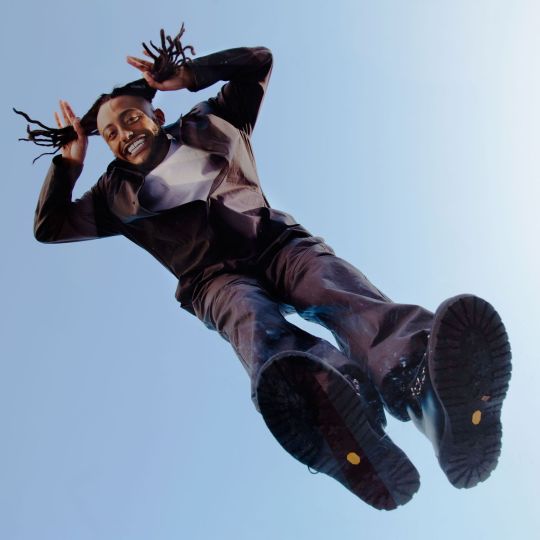
“Shimmy” by Aminé
Oregon’s most prominent rapper — okay, fine, Oregon’s only prominent rapper — came out of the gates blazing this year with “Shimmy.”
Aminé may have heavily sampled Ol’ Dirty Bastard’s classic “Shimmy Shimmy Ya” on his second album’s leadoff single, but he replaces ODB’s chaotic vibes with a cold, snarling precision. He almost evokes Pusha T in his gleeful takedown of his rivals over the ice-cold beat. Pair this banger with one of the year’s best music videos, and there’s no doubt it would sneak onto this list.

“Dakiti” by Bad Bunny and Jhay Cortez
I am all about this nocturnal, new wave-y style of reggaeton. The melody is catchy as hell, yet the production has a sinister, chilly vibe that wouldn’t sound out of place on an Italians Do It Better complication.
Megastar Bad Bunny’s husky vocals and Jhay Cortez’s more nasally voice make for a fun contrast as they trade verses. It’s a winning and charismatic combination!

“Boomer” by Bartees Strange
When you hear the phrase “rap-rock,” you’re likely shuddering at the thought of Limp Bizkit. But that style can work, as promising new artist Bartees Strange — stage name of D.C. alt-rocker Bartees Leon Cox — proves on “Boomer.”
Cox spices up a solid mall-punk banger with some rap verses. And unlike the Fred Dursts of the world, he can actually, you know, rap.
But it’s the song’s explosive chorus, where Cox unleashes his howling vocals over charging guitars, where “Boomer” goes from an interesting song to a great one. If there’s any justice, he’ll be rising up the indie ranks very soon.
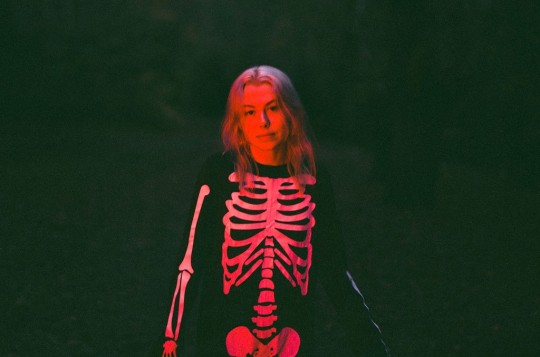
“Kyoto” by Phoebe Bridgers
I think I might be the only music nerd who didn’t adore Phoebe Bridgers’ new album, Punisher. For me, her mix of hushed, mostly-sincere singer-songwriter ballads with snarky lyrics just came off as tonally awkward. Her quips about Scientology and outlet malls in otherwise-sad ballads left a sour note for me.
But Bridgers’ unique songwriting style shines most on the few uptempo songs on Punisher, particularly “Kyoto.” Her goofy non sequiturs fit much better in a driving, anthemic song. And I’m immediately primed to enjoy any tune with a strong resemblance to Sufjan Stevens’ “Chicago.”
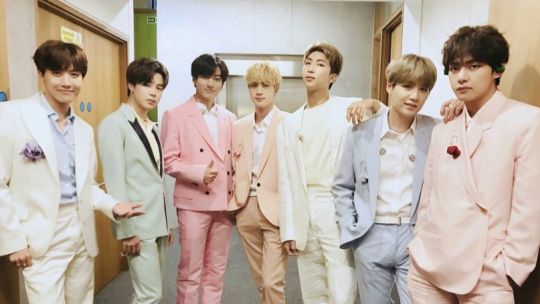
“Dynamite” by BTS
I’m not sure what it says about me that I didn’t learn to love BTS, the insanely-beloved South Korean boy band, until they finally recorded a song in English.
It’s not that I dislike their earlier, Korean-language stuff — “Boy With Luv” in particular is a banger. And BTS’ English-language lyrics on “Dynamite” don’t really have any meaning (they’re basically just a bunch of random catchphrases jammed together ... but they do sound good).
But there’s something immediate and pristine about “Dynamite” that makes it impossible to not adore. It’s a little too cleanly produced to be on the level of the Bruno Mars hits BTS were clearly aping, but the sense of fun is infectious. At the very least, it’s on equal footing with Taio Cruz’s classic of the same name.

“Comeback” by Carly Rae Jepsen feat. Bleachers
Carly Rae Jepsen can knock out wistful synthpop nuggets like this in her sleep. So can Jack Antonoff, who produced the track and provides some backing vocals.
But just because this isn’t anything new for the duo doesn’t mean the winning formula’s gone stale. “Comeback” is a worthy addition to both of their catalogues.
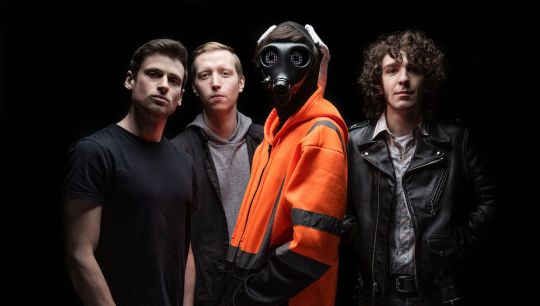
“Hollywood” by Car Seat Headrest
I can’t, in good conscience, put this song in the top 25. It’s an intentionally abrasive misfire from the Seattle indie rockers, who’ve done much better. Complaining about the vapidness and sleaziness of Hollywood is an overplayed topic, and letting side members of the band rap some of the verses (in goofy voices, no less) was maybe not the best call.
...but at the same time, there’s something to this objectively bad song that I keep returning to. Maybe it’s the embarrassing bluntness of the lyrics. Maybe it’s the forceful guitar riff. Maybe it’s because the aggro, visceral nature of “Hollywood” makes it a perfect workout song. Maybe it’s the goodwill left over from Car Seat Headrest’s last two albums, which were both stone-cold indie rock classics. I’m not sure!
But even though I know it’s not a good enough song to make the proper list, I can’t lie to myself and leave it out of the honorable mentions. It’s a banger in spite of itself.
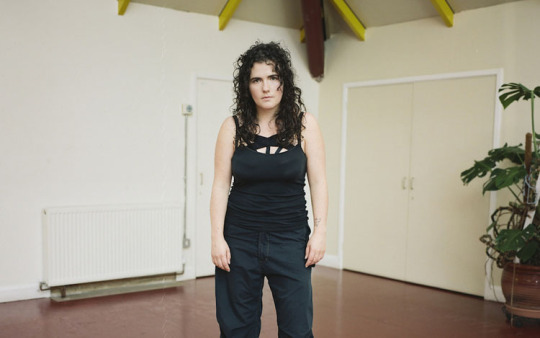
“24 Hours” by Georgia
"24 Hours” is the best possible version of a left-of-center synthpop club banger.
What makes it great — the pulsating energy, Georgia’s yearning vocals, the “whoo!” vocal samples — are obvious on immediate listen. But perhaps what makes “24 Hours” worthy of this list is its replay factor. It came out in January, and it still sounds great 11 months later.
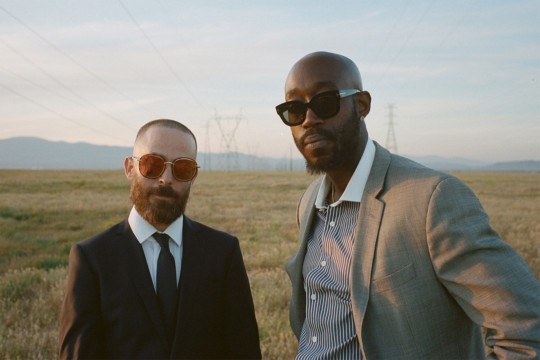
“1985″ by Freddie Gibbs and The Alchemist (song starts at 1:35)
We already knew — thanks to his two collaborative albums with Madlib — that Freddie Gibbs’ gruff flow sounds incredible over dusty samples. So why not team up with another producer who does something similar?
“1985″ is a prime example of knowing one’s strengths. The Alchemist’s production is stunningly gorgeous in his typical style, with a soaring guitar solo and a shuffling, dreamy beat. Gibbs pounces on it with the same ferocious street-life verses he’s been spitting for years. I’m glad to see Gibbs has figured out exactly which production sounds best for him to make Tiger King jokes and tell coke-dealing stories.
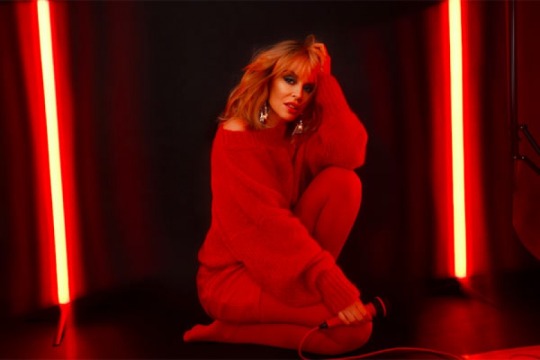
“Say Something” by Kylie Minogue
Aussie icon Kylie Minogue has been at it for 33 years at this point, reminding us every decade or so exactly why she’s stuck around.
“Say Something” is one of those reminder tracks — a burbling, irresistible, futuristic-yet-retro disco banger. The production is stellar, from the clanging guitar riff to the bouncy synth bass, and Minogue has a winking confidence on the track like she’s been doing this for decades (which, of course, she has). It’s exactly what you want out of a bubblegum pop jam.
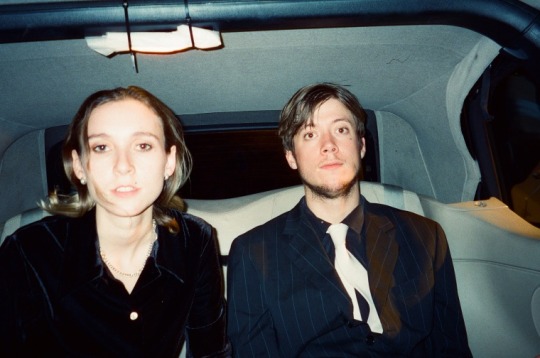
“Right Round The Clock” by Sorry
With their very-British boy-girl dueling vocals, new London indie rock outfit Sorry definitely have more of a whiff of The xx. But instead of hyper-minimalist, whispered tunes, “Right Round The Clock” has a thundering, droll swagger that grabs you by the throat when the chorus comes slamming in.
The thumping, piano-based sound of “Clock” has a bit of a jazzy flair, thanks to the flecks of sax that pop in here and there. And Sorry interpolates Tears For Fears’ classic “Mad World” in a gloriously tongue-in-cheek way on the chorus (at the very least, it’s far superior to that awful gloom-and-doom Donnie Darko cover).
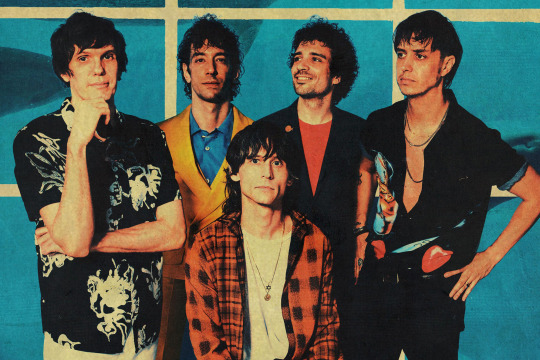
“Brooklyn Bridge To Chorus” by The Strokes
In a year FILLED with improbable comebacks from ‘00s and ‘90s artists (we’ll get some of to them in the top 25!), The Strokes may have been the least likely. The early ‘00s indie rock standard-bearers had been in sharp decline for nearly 15 years before their new album, The New Abnormal, dropped and the group returned to form.
“Brooklyn Bridge To Chorus” is a prime example of The Strokes’ invigorating comeback. It’s a killer new-wave jam that could’ve been been written by The Cars, with its jittery keyboards and impossibly catchy chorus. And of course, The Strokes’ most valuable asset — lead singer Julian Casablancas’ impossibly cool vocals — is here in full force.
It’s not quite Is This It, but “Brooklyn Bridge To Chorus” is still The Strokes’ best song in 14 years.
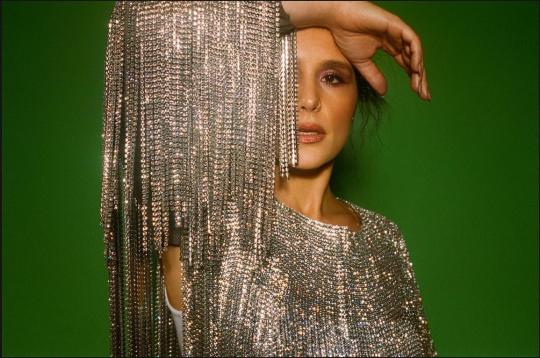
“Spotlight” by Jessie Ware
After a career making increasingly dull ballads, “Spotlight,” and Ware’s new What’s Your Pleasure? album, is a refreshing change of pace into sleek dance-pop.
I don’t know if “classy” has ever been used to describe disco, but that’s the best way to describe “Spotlight.” It’s undoubtably a dancefloor filler, with a funky groove and ‘70s string stabs, but there’s also a stateliness to it. It could fit equally well at Studio 54 as it would at a black-tie affair. I credit Ware with that, using her breathy vocals and charisma to strong effect here.

“Lilacs” by Waxahatchee
Any time you can write a song that sounds like an outtake from Tom Petty’s Wildflowers, I’m on board.
That’s a bit of a reductive way to describe “Lilacs” — Katie Crutchfield’s vocals are much more fiery, for starters. But there’s something nostalgic and welcoming about this southern-fried folk-rock song with oblique lyrics and catchy hooks for days.
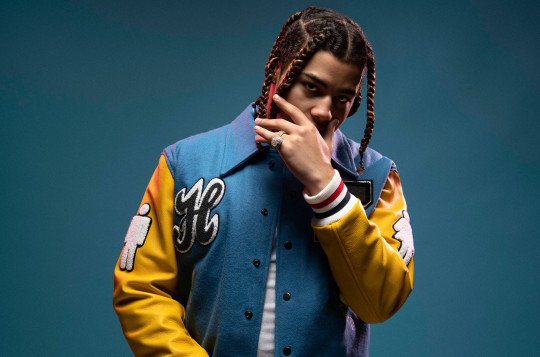
“Mood” by 24kGoldn feat. iann dior
Much of this new wave of emo-influenced rap isn’t really my thing. Maybe I’ve grown out of super-angsty and blunt songs about depression? Although I still love Smashing Pumpkins, so maybe that’s not the case. I can’t really answer why I don’t adore Juice WRLD or Lil Peep like so many others seem to.
But “Mood” — an unabashed sell-out, watered-down version of that sound – immediately clicked for me. I know 24kGoldn is trend-riding here, and that this is essentially a wildly shallow pop song. BUT! It’s a really catchy wildly shallow pop song! With bouncy pop-punk production that sounds like trap-ified Blink-182! (okay, it’s much better than that sounds, but you get the point)
I allow myself a guilty pleasure or two on my lists. “Mood” is one of those guilty pleasures this year. As the kids (presumably still?) say, it’s a vibe.
2 notes
·
View notes
Photo

Sally Shapiro - Sad Cities
(Synthpop, Dance Pop, Italo-Disco)
Sally Shapiro's first album in nine years, Sad Cities is a tentative, though gorgeous return for the Italo-Disco duo. The quieter presence of Shapiro herself is kept alive by Johan Agebjörn's fantastic production work, taking sonic hints from city pop, deep house and plaintive 80s balladry to make Sad Cities a numinous, commanding return for the underground pop icons.
☆☆☆☆
Musical retirements often aren't as much of a retirement as the name suggests; most of the time, they're more akin to a prolonged break in an artist's career while they take care of whatever's more important to their lives at that point. It's why the individual musicians in "retired" rock bands often move on to new projects that last just as long as the group they left, why some rappers may only leave the scene for a few years before jumping back into making the music they love. For Gothenburg pop duo Sally Shaprio, made up of the titular singer/songwriter and electronic producer Johan Agebjörn, this break was about nine years. Described as "...too shy to perform live" on the duo's Bandcamp page, the group has always had this certain mystique to them, and that's not just because of the heavy influence from the underground futurism of the Italo-Disco sound they borrow many of their musical cues from. You imagine what it might be like for this chilly future to welcome you in, and succumb to it completely. Now, Sally Shapiro is taking things further, taking sonic hints from city pop, deep house and plaintive 80s balladry to make Sad Cities a far cry from their past work. Looking to distance themselves from their past alongside their new record deal with West Coast indie label Italians Do It Better, there's a lot new to love about the sound of Sad Cities. There's times where I'm oft reminded of the cheerful dance work of DJ Sabrina the Teenage DJ, particularly with the bright piano leads and flourishing string orchestra on the title track and Falling Clouds' optimistic synth leads that could fit right at home on Charmed or Makin' Magick, but deeper cuts here like the seven-minute masterclass in euphoric house-pop Fading Away and the shuffling techno kick drums among a swarm of pianos and percussion on the romantic Million Ways that bring Sad Cities into that liminal space of retro pop and obsessed-with-perfection modern electronica. There's even some nods to Tears for Fears style balladry on Love in Slow Motion with Canada's own Electric Youth. For anyone already familiar with their work, Sad Cities is a wildly exciting progression for Sally Shapiro in the modern day, and for newcomers it's a fantastic display of melt-in-your-mouth synthpop. But what makes Sally Shapiro stand out from the hundreds of other modern synthpop acts so deeply indebted to the 80s pop sound isn't just how unique and varied the production on Sad Cities can be. Sally Shapiro herself is what ties Sad Cities together, her whispered and yet still strong melodic presence throughout these 11 tracks makes her voice, eternally trapped in LED-lit city smog, come right through these leviathan pop tunes. Agebjörn does opt to mix Shapiro's voice quite high in the mix to make sure she's always there at the center of things, but that doesn't make her performances here any less stellar. On fainter, dreamy tracks like midsection highlight Dulcinea or the smoky Down This Road two songs before it, her voice rings through with an added level of supernality, a god of the decadent shopping malls of our past. When it comes to the heavier, housier songs on Sad Cities, Agebjörn doesn't let the production overwhelm her voice, stable and always in the back of your mind even if you get lost deep in the vibrantly colored magic of Fading Away or Tell Me How. Sally Shapiro's angelic voice centers the huge musical swerves Sad Cities takes between block to block, reminding the duo of where their final destination of pop bliss is located. While I've never been too big a fan of the modern synthpop revival (or most genre revival scenes in general, to be quite honest), Sad Cities does something most of the others do not, which is instill Sally Shapiro's own values into the musical stylings they're building off of. Their world is a bit darker than the rest, it's pop music that doesn't show you all that might be going on at once, you have to truly invest yourself in the music for Sad Cities magic to reveal itself. It's why Sad Cities can vary its sounds and emotions from song to song without the pace of the album falling apart, they know that a good 80s slow jam isn't enough on its own anymore, so they add just a dash of transcendent majesty to get things moving along smoothly. I can come back to Sad Cities and find something new in it every time, and that's not even to speak of just how upscale and extravagant these songs are. It's likely a good thing that Sally Shapiro took a long break from the world, because without it I'm not sure an album as consistently divine as Sad Cities would exist otherwise.
#sally shapiro#sad cities#italians do it better#dance#dance pop#deep house#disco#electronic#house#indie pop#indietronica#italo-disco#pop#synthpop#synthwave#2022#8/10
0 notes
Audio
HÅN’s crisp ethereal, brittle haunting pop enchanted us to no end when the Italian singer songwriter debuted earlier this year with The Children. She proves the song no anomaly as she shares her long awaited second single, 1986, and enthralls us with her effortlessly pristine vocals once again. 1986 is dreamy soothing yet plucky dynamic. Part art pop, part dream pop, and part synthpop, the beautiful single twinkles and shimmers, as if woven out of a million fine shards. For all its glowing serenity, 1986 is also delicately steeped in aching melancholia. The single can also be streamed off Spotify, here.
#HÅN#HAN#1986#pop#synthpop#alt pop#alternative pop#art pop#electronic pop#electro pop#electropop#alt#alternative#indie electronic#indietronica#ethereal pop#dream pop#music#song
3 notes
·
View notes
Photo

Yugotones: Balkan Communist Pop and New Wave
Part six of seven (probably). Parts one through five can be found by clicking the tag “my mixology career” at the bottom of this post; probably wait until you’ve clicked through to the full post before you do that, though. (Yes, I am explaining Tumblr to people who are not on Tumblr.)
The YouTube playlist for this mix is here. The tracklist is below; my notes on the mix, the background, and the songs are below that.
Bebi Dol, “Rudi”
Xenia, “Troje”
Zabranjeno Pušenje “Zenica blues”
Data, “Neka ti se dese prave stvari”
Dorian Gray, “Za tvoje oči”
Borghesia, “On”
Idoli, “Bambina”
Film, “Boje su u nama”
Bastion, “Hollywood”
Slađana Milošević, “Ja sam neka čudna vrsta”
Bliski Susret, “Kao nekad”
Plavi Orkestar, “Suada”
D’Boys, “Mi smo D’Boys”
Denis i Denis, “Program tvog kompjutera”
Gjurmët, “Të shtrirë mbi kanape”
Zana Nimani, “Što ne znam gde si sad”
Paraf, “Fini dečko”
Crvena Jabuka, “Nek’ te on ljubi”
U Škripcu, “Siđi do reke”
Videosex, “Moja Mama”
Josipa Lisac, “Ja bolujem”
Yugotones: balkan communist pop and new wave
For a long time when I was planning these mixes, I was going to lump all of Eastern Europe together into one Behind The Iron Curtain mix. But the more I listened and read and understood, the less snugly that seemed to fit the facts. Not just because Yugoslavia had broken away from the Soviet-aligned Eastern Bloc in the 1960s, siding with Maoist China in the Sino-Soviet split, but because Yugoslavian media — print, radio, and television — did not wholly abjure the decadent West. State-owned record labels issued foreign and local beat groups in the 60s and prog and hard rock groups in the 70s, with the result that the Balkan punk wave hit roughly contemporaneously with the French, Spanish, Italian, etc. waves. (Meanwhile, in the Soviet sphere, Fifties and Sixties rock signifiers were only just starting to gain official approval, as we will see.)
There was, and is, far more complexity to the Socialist Federal Republic of Yugoslavia as it existed between 1945 and 1992 than I can hope to convey here, even if I fully grasped it all, which I don’t remotely. But put simply: ethnic tensions, especially between the richer, more populous, and administratively overrepresented Serbs and minority populations like Croats and Bosnians, were always high. The 1980 death of President-for-Life Josip Broz Tito, who came to power fighting Fascists in the 1940s, accelerated those tensions, and ghouls like Slobodan Milošević would take advantage of the power vacuum to stoke the flames of ethnic resentment: the horrific post-breakup wars of the 1990s, which are all most of us know about the Balkans, were far more the product of sustained propaganda campaigns than of any regional propensity for violence — indeed, propensities for violence are inculcated by means of sustained propaganda. (Which is how toxic masculinity, to choose an example not at all at random, operates.)
But very little of that grimness, tension, or rage is present within this music, which like much of the rest of European pop in the early 80s is both excited and wary about new technology, eagerly devouring the new and rummaging through the old to see what can be relevantly cannibalized, and giddy with its own creative strength. Although Eastern European and Balkan rock has since the 80s gained a certain reputation for seriousness, not to say dourness, that’s only partly true here — mostly, granted, because my own predilections privilege the froth and giddiness of pop rather than the grim chug of rock, but also because Yugoslav society (to the extent it was a unified society) was much freer and more open in the 80s than it had been for decades. The death of Tito functioned much like the death of Franco had in Spain: the old truths (and especially the old censorships) no longer held, and all kinds of material rose to fill a marketplace which had weathered thirty years of the Cold War better than any other in Eastern Europe.
In fact, you have to go to MTV in the Us or Top of the Pops in the UK to find as much solid pop-video work as there is in this mix: most of the biggest songs had several different videos, because there were a lot of competing pop shows on Yugoslav television and sometimes they each commissioned their own video.
There is still plenty of Communism represented in the mix, though: notably the predominance of the state record label, Jugoton, as the issuer of most of the music below. Variants mostly reflect the city of origin, to which point: Yugoslavia was a federation of six socialist republics: Serbia, Croatia, Bosnia, Slovenia, Macedonia, and Montenegro, as well as two autonomous communities within Serbia, Kosovo and Vojvodina. Linguistically diverse (Serbian, Croatian, Bosnian, and Montenegrin are all to some degree mutually intelligible, but Slovene, Macedonian, and Kosovar Albanian are not), ethnically and religiously heterogeneous, and with a long history of nominal administrative unity but distinct local practices, Yugoslavia represents the point in these mixes where my slender grasp on the languages in question fails entirely.
There are seven Serbian, seven Croatian, three Bosnian, two Slovene, one Macedonian and one Kosovar songs, not that I could distinguish any of them except diacritically. Albania, the Balkan socialist republic bounded by Yugoslavia and the Mediterranean, is not represented at all except linguistically (Kosovo is largely ethnic Albanian); state repression of non-folk popular music was enforced in Tirana until the 1990s.
I think that’s all the hedging I wanted to do. Although this project has been called a “deep dive,” I think of it much more as a surface skim. Anyone with the patience to click around on YouTube, fact-check against Discogs, and use Chrome’s translation tools could do the same. You can too. If you like anything you hear, you should.
1. Bebi Dol Rudi PGP RTB | Belgrade, 1983
We open with perhaps the most perfect pop song produced in Eastern Europe all decade: a valentine to Rudolph Valentino, sung by Serbian pop starlet Dragana Šarić. Her stage name is such deliberately infantilizing phonetic English that the breadth of her music, far from being lolita-esque dance-pop, can take the unwary by surprise. Her work was influenced by jazz, Arabic pop, and traditional Slavic folk as well as international pop: and despite its puppy-love lyrics, “Rudi” is structurally surprising, as she takes a basic pop song and unfolds unexpected harmonic filigree in post-chorus vocal flights. The voluptuous sweep of the melody fits in well with the plush erotic fantasies enacted on screen by Valentino: one video clip has Šarić intercut with scenes The Sheik, which helps elucidate the colonialist trappings of Western commodified (heterosexual) desire.
2. Xenia Troje Jugoton | Zagreb, 1984
What I always think of as the Blondie model of pop — a sharp pop-rock band fronted by a cool, attractive woman — was extremely popular in the early 1980s, and in Yugoslavia every major ethnicity had their own. Xenia was the Croatian version: singer Vesna Vrandečić was the singer, although on this single (“Three”) she cedes the chorus to the band’s guitarist and songwriter Robert Funčić’s laid-back almost-rap. Since it’s a song about the drama of men fighting over a woman, and the chorus is first-person from one of the men, it makes a kind of sense: but overshadowing both singers is the tense, blustery edge of the music, all paranoia and bluster, replicating the physical sensation of being in the room for such a fight.
3. Zabranjeno Pušenje Zenica blues Jugoton | Sarajevo, 1984
Although one of the smaller and poorer republics in the Yugoslav federation, Bosnia was one of the few to engender an honest-to-goodness local cultural movement (as opposed to merely imitations of Western models) in the 1980s. The “Novi primitivizam” (New Primitivism) that swept Sarajevo between 1981 and 1987 was a jocular proletarian reaction to the self-serious New Romanticism of British import (and Croatian popularization, as we will see) and Slovenian Neue Slowenische Kunst (we’ll see a bit of that too). Zabranjeno Pušenje were perhaps the foremost Novi primitivizam band: a folk-punk outfit like the Fugs or the Mekons, their music was characterized by local slang (often borrowed Turkicisms), simple melodies, and rudimentary instrumentation. Their low-key anthem “Zenica blues” (sometimes “bluz”) is a Johnny Cash-like tale of petty criminality, prison sentences, and the gloomy garrison at Zenica.
4. Data Neka ti se dese prave stvari Jugoton | Belgrade, 1984
YouTube comments are full of how this is a copy of Depeche Mode’s “See You,” but a synthesizer doing the wedding-bells riff from the end of “Then He Kissed Me” isn’t exactly an original thought. Regardless, it’s a beautiful synthpop gem from associates of Serbian synth-funk collective the Master Scratch Band. The three members of Data, who also played behind the Scratch Band’s girl group Šizike, only produced a single 45 under that name, but have been endlessly compiled and reissued on the strength of it.
5. Dorian Gray Za tvoje oči Jugoton | Zagreb, 1985
The Croatian adoption of the British New Romantic ethos found its greatest exponents in a band named after an Oscar Wilde character, whose first single, “Sjaj u tami,” was a Scott Walker cover, and whose singer, Massimo Savić, ran the gamut of glam-rock masculinity from David Bowie fey to Bryan Ferry louche. “Za tvoje oči” (For Your Eyes) was the title song from their second LP, a crooning, brooding masterpiece but commercially disappointing; the following year, Savić went solo, and has become an elder statesman of glamorous, elegant Croatian pop.
6. Borghesia On FV Založba | Ljubljana, 1985
The most famous musical wing of the Neue Slowenische Kunst (New Slovenian Art; the German title is intentional) was the long-serving industrial band Laibach — since they primarily sing in English, they don’t appear here. But fellow-travelers Borghesia, also industrial, electronic, and dark, primarily sang in Slovene. “On” (He) is a full-on Electronic Body Music song, as developed by Belgian group Front 242: arpeggiators and screams soundtrack lyrics to a descent into fetishism which even in choppy Google Translate makes Venus in Furs read like Mother Goose. The video needs no translation: it’s not remotely safe for work.
7. Idoli Bambina Jugoton | Belgrade, 1983
More or less the founders and guiding spirit of the Serbian new wave, Idoli (Italian for idols) came to prominence in 1980 with songs like the post-punk “Retko te viđam sa devojkama” (I Rarely See You with Girls), about closeted homosexuality, and the Cossack-ska “Maljčiki” (Boys), mocking Soviet socialist-realist aesthetics. By 1983 they had produced several of the landmark albums of the era and had little left to prove; their final album Čokolada (Chocolate) was a huge-selling last hurrah, full of pop hooks and complicated sentiment. “Bambina” sounds like a love song, but the lyrics are actually full of suspicion and resentment.
8. Film Boje su u nama Jugoton | Zagreb, 1983
The Croatian standard-bearers of new wave — so much Idoli’s counterparts that they co-headlined a joint tour in 1981 — by 1983 Film were closer to the shiny guitar-pop of classic rock than to the twistier, more acerbic edge of new wave. Their 1983 album Sva čuda svijeta (All the Wonders of the World) leaned into the Hollywood signifiers suggested by their name: album opener “Boje su u nama” (We Are Made of Stars) includes Dirty Harry, Kubrick, and MGM references before the song even kicks in. When it does, it’s a blissed-out relative of “Start Me Up,” as hippy-glam as Marc Bolan at his best.
9. Bastion Hollywood PGP RTB | Skopje, 1984
The sole representative of Macedonia in this mix, Bastion was a four-person operation: one on synths, one on bass, one on vocals, and one on songwriting and visual art. The result of that skeletal operation was a surprisingly dubby approach to synthpop, as singer Ana Kostovska’s Lwin-y vocals wander around an endless funk-bass echo chamber punctuated by all kinds of sounds. The lyrics are the usual trenchant commentary on the dream factory that you would expect from the title, but the bass is the reason to listen.
10. Slađana Milošević Ja sam neka čudna vrsta Jugoton | Belgrade, 1983
My choice of this song to represent Slađana Milošević (her first name can also be written Sladjana) is perhaps eccentric, but it fit too well in the mix to not. Something between the Grace Jones and the Nina Hagen of Serbian new wave, she had weathered controversy in the late 70s for her Patti Smith-inspired rock, and was such an international pop star that her 1983 record Neutral Design was recorded in Munich with German musicians. It’s a hell of a record: every song made it onto Yugoslav television, often in multiple videos, and they’re all good. This, the closer (“I’m an Odd Sort”), is unexpectedly light and breezy: a witchy, jazzy calypso in which she mostly sticks to a high, soft register to sing about forbidden knowledge and how poor an adept the song’s “you” is.
11. Bliski Susret Kao nekad Jugoton | Zagreb, 1984
It wouldn’t be an entry in this mix series if I didn’t include at least one single that has never been reissued and is only available on YouTube. The Croatian act called Bliski Susret (Close Encounter) only issued a single song (the B-side is the same song in English), this beautiful slice of studio-based nostalgia, all production and sentiment. It was a one-man show: Željko Bošković, whose real career has been as a studio owner and producer in Zagreb, producing some of the best Croatian pop of the last thirty years. “Kao nekad” (Like Before), which sums up romantic pop from Spector to Gainsbourg, remains a swoon-worthy calling card.
12. Plavi Orkestar Suada Jugoton | Sarajevo, 1985
Bosnian pop in the 80s was not at all just the New Primitivism, although no doubt its emphasis on stripped-down structures and folkloric origins had some influence on Plavi Orkestar, who sound exactly like what a Western conception of “Balkan pop-punk” might be. Anatolian rock riffs, all-comrades-together shouted choruses, and lovelorn lyrics about a faithless woman — and in the middle eight, about forgetting the faithless woman by going out on the town with your boys — made “Suada” a huge hit, the first of Plavi Orkestar’s long and enviable career.
13. D’Boys Mi smo D’Boys Jugoton | Belgrade, 1983
There are more differences than similarities, but the act that kept coming to mind as I dug into the D’Boys discography was Wham! Like George and Andrew, they were dismissed as lightweight pop fluff compared to the Real Rockers surrounding them; like George, Peđa D'Boy (Predrag Jovanović) assimilated a host of influences and went largely unrecognized as an innovator who predicted much of the trashier end of the European 90s. Which doesn’t mean that the Laughing Gnome effect which opens this drum-machine-and-guitar-bash anthem isn’t a throwback; but it’s also a sound I’ve heard a lot more often in global pop in the 2010s. “Mi smo D’Boys” means “We Are D’Boys,” and Peđa’s party (in both senses) sloganeering over its dumb-brick simplicity makes me think of such ironists as Morrissey, Neil Tennant, and Jarvis Cocker — another D’Boys track, “Sexy Sexy,” sounds unaccountably like “Common People.”
14. Denis i Denis Program tvog kompjutera Jugoton | Rijeka, 1984
Comparing Croatian synthpop duo Denis i Denis to British acts like Eurythmics or Yazoo is probably less illuminating than otherwise; but the general set-up is equivalent. Davor Tolja was the synthesizer maven, Marina Perazić the voice and sex symbol: her gasps and strangled sobs during recording were as important to the band’s electronic-erotic aesthetic as her low, singing voice. This single (Your Computer Program) was their biggest hit, but they were so consistent between 1983 and 1988 that just about any record could have gone in.
15. Gjurmët Të shtrirë mbi kanape RTP | Pristina, 1985
The sole representative of Kosovo on this mix, Gjurmët were very nearly the first rock act to sing in Albanian ever, and probably the first recorded. Their only release during their years of activity in the 1980s was a cassette delayed by the censors for over a year due to perceived Albanian nationalism, but later reissues, as both Albanian and Kosovar culture has become more open, have kept their memory faintly alive. “Të shtrirë mbi kanape” (Sprawled on the Couch) is their best uptempo song, urgent and moody, with superb new-wave guitar heroics from Bekim Dyla.
16. Zana Nimani Što ne znam gde si sad Jugoton | Belgrade, 1986
If Xenia was the Croatian Blondie, the Serbian edition was Zana, with a series of sparkling power-pop hits over the early 80s. But when singer Zana Nimani, for whom the band was named, left in 1985, the band carried on with a succession of new singers and little diminution in popularity. Nimani’s only solo album, 1986’s Noćas pevam samo tebi (Tonight I Sing Only for You) was recorded in Sweden, and this minor hit (I Don’t Know Where You Are Now) sounds like it: shiny and heartfelt, only her melodramatic voice gives her away as Balkan.
17. Paraf Fini dečko ZKP RTVL | Zagreb, 1981
In these mixes I’ve had little patience for straight-up punk or its immediate descendents, but Paraf are unique and strong enough to be an exception. They began as a shouty punk band, and were important enough to make the 1979 compilation documenting Zagreb’s punk scene; but after their first album in 1980 singer Valter Kocijančić quit, and female singer Vim Cola (Pavica Mijatović), and keyboardist Raul Varlen joined. They moved towards anthemic post-punk, as documented by this first single in the new line-up. “Fini dečko” means “FIne Boyfriend,” and the lyrics document how weirded out Cola is by a good, clean, upright boy. They would go on to make some of the most politically righteous music of the Croatian new wave, but this single, with one foot still in punk, is their most fun.
18. Crvena Jabuka Nek’ te on ljubi Jugoton | Sarajevo, 1986
Don’t be fooled by the huge glossy opening chords: Crvena Jabuka (Red Apple) aren’t a Sarajevan Van Halen (not that that would be a bad thing). They’re closer to a Bosnian Enuff Z’Nuff: a shiny hard-rock body over a winsome 60s-pop chassis. Named after the Beatles label, their self-titled debut album in 1986 was an immediate hit: but several months later the lead singer and the bass player were killed in a car accident. The remaining members forged on, and achieved even greater success, becoming one of the key figures of late 80s and early 90s Yugoslav rock; they still record today. “Nek’ te on ljubi (Kad ne mogu ja)” (Let Him Love You [If I Cannot]) is a power-pop gem that had unexpected resonance after frontman Dražen Ričl was replaced, and surpassed, by keyboard player Dražen Žeri.
19. U Škripcu Siđi do reke Jugoton | Belgrade, 1983
This shouldn’t be your only exposure to Balkan pop: there’s so much I haven’t included, from synthpop pioneers Boa and cross-dressing glam-funk star Oliver Mandić to stuff I don’t even know about. But after hearing it, I had to include “Siđi do reke” (Come Down to the River) by post-punk band turned New Romantics U škripcu (In a Heartbeat) no matter who I bumped. A hovering, almost ambient piece, equal parts “In Every Dream Home a Heartache” and traditional Serbian folk song, it’s one of the magnificent centerpieces of 80s Yugoslav pop.
20. Videosex Moja Mama ZKP RTVL | Ljubljana, 1983
The Slovene equivalent to the Croatian Xenia and the Serbian Zana was Videosex, who were probably the best of them all: singer Anja Rupel had more personality and the band was more versatile, jumping from straight-up synthpop like “Moja Mama” (My Mama, a mocking pout about stepmothers) to the noirish “Detektivska priča” (Detective Story) and even reaching back to 1940s swing for “Tko je zgazio gospođu mjesec” (Who Was the Lady of the Month). Rupel would go on to sing with Laibach; but this early giddy work remains unspeakably delightful.
21. Josipa Lisac Ja bolujem Jugoton | Zagreb, 1987
Comparisons to Kate Bush would be arrant nonsense: Croatian singer Josipa Lisac had been a distinguished art-rock singer for a decade before “Wuthering Heights,” both with beat group Zlatni Akordi and on her own. But in the neon 80s her eccentric sense of style was given room to flourish, and she made a series of crucial recordings halfway between pop, electronic rock, and local art-song traditions. When she presented “Ja bolujem” (I’m Suffering) at the 1987 MESAM festival in a dress that moved on its own as dancers below it ran through an intricate choreography, it was a magnificent capstone on the first half of her career. She’s since gone on to a more sedate Céline-like goddesshood, but her voice is still one of the most powerful instruments in the Balkans.
Next: “Eastern Europe” is a vast territory to cover. Whatever I do, I will not do it justice. My only comfort is that I haven’t done justice to anywhere else either.
24 notes
·
View notes
Text
Interview by Italian TV ‘Cremona 1′ (Channel 211 of DDT)!
Ciao a tutti! Mercoledì 31 gennaio, sarò ancora ospite di "Cremona 1 TV" (canale 211 del digitale terrestre) all'interno della trasmissione "ore 12"! Parlerò del nuovo album "Noises from Melancholia", tante news e vi saluterò uno ad uno! Vi aspetto!
Hello everybody! On Wednesday 31th January I'll still be guest for Italian TV "Cremona 1 TV" (Channel 211 of DDT) within "ore 12" program! I'll talk about the new album 'Noises from Melancholia', lots of news and I'll greet you one by one!? Stay Tuned!


#bona head#singer songwriter#electropop#pop rock#synthpop#piano#music#cremona1tv#tv show#italian tv#noisesfrommelancholia#new album
0 notes
Photo

Electroshock: Anarchic Mediterranean Pop and New Wave
Part three. Twenty-one songs, 1981-1987, from Italy and Greece. Here's the YouTube playlist. Tracklisting below, “liner notes” below the cut.
Jo Squillo Electrix, “Africa”
Diaframma, “Tre volte lacrime”
Diana Est, “Tenax”
Litis + Trik, “Fáka”
Matia Bazar, “Elettrochoc”
Alberto Camerini, “Bip Bip Rock”
Roberta D’Angelo, “Noce di cocco”
Lena Platanos, “Ti Néa Psipsína?”
Denovo, “Niente insetti su Wilma”
Nada, “Amore disperato”
Tullio De Piscopo, “Stop Bajon”
Dreamer and the Full Moon, “Sandrina”
Marcella Bella, “Nell’aria”
Garbo, “Quanti anni hai?”
Ivan Cattaneo, “Quando tramonta il sol”
Aphrodite Manou, “Nykteriní Ekpompí”
Litfiba, “Elettrica danza”
Skiantos, “Ti spalmo la crema”
Giuni Russo, “Alghero”
Metro Decay, “Mavros Kyknos”
Melodrama, “Kyrie Eleison”
Electroshock: anarchic mediterranean pop and new wave
If I thought mainstream French pop was relatively unaffected by the radical shifts in Anglophone rock and pop fashion, Italian pop is even more so: many of the popular Italian ballads of the 1980s were virtually indistinguishable (save for details of production) from what lyrical Italian composers were turning out a hundred years previously. As (arguably) the birthplace of the post-medieval Western European music culture, Italy generally takes an if-it-ain’t-broke-don’t-fix-it attitude toward its cultural heritage, an attitude wholly at odds with American notions of generational revolt or ripping it up and starting again: operatic singing remains a populist form, and mainstream Italian rockers tend to sing in a theatrical Billy Joel vein rather than with a fuck-yr-conventions sneer.
But this mix isn’t just Italian: there’s a thread of Greek running throughout. Although combining the two Iberian nations makes geographic and linguistic sense, and expanding Francophonie beyond France is obvious, throwing Italy and Greece together is extremely unintuitive, unless you’re a dyed-in-the-wool classicist. Inheritors of the two oldest unbroken (though hardly unchanged) cultures on the European continent, the descendants of the ancient Roman and Hellenic empires had, by the penultimate decade of the twentieth century, been through a lot. Specifically, they had both slid precipitously from their midcentury postwar peaks of economic expansion and cultural export: Italy thanks to the Anni di piombo, or years of lead, in which both far-left and far-right terrorism, assassination, and thuggery cratered popular support for politics of any kind (enabling the rise of Berlusconi’s entertainment-empire kleptocracy), and Greece thanks to a far-right military junta that overthrew a center-right government and gave fascism a home on the otherwise Communist Balkan Peninsula. By the early 80s, both the Anni di piombo and the junta were spent and democracy was returning, but everything was still disorderly, even anarchic, politically and culturally.
Which is where this music comes in. The avant-garde in both Italy and Greece identified deeply with the European project, which means that much of their most modern music was sung in English, both in imitation of UK and US innovations, and because everyone else in Western Europe (save for France and Spain, where ancient conflicts with the British Isles led to a sort of linguistic protectionism) was doing the same. Between the endless fountains of italo-disco aimed at the general Euro dancefloor market and the austere post-punk acts on tiny labels reissued by “minimal wave” enthusiasts today, it can sometimes feel that almost nobody was singing in Italian in the 80s except for sensitive singer-songwriters, leftover prog burnouts, and cracked-voice divas with massive power ballads. The same was true in Greece, except more so: the midcentury art-folk forms éntekhno and laïkó were still so dominant that almost anyone who wanted to engage with modern international sounds did so in an international language.
But beyond the glossy outer wall of Italian pop, as celebrated by such events as the annual Sanremo Song Festival, there were multiple anarchic rock and pop scenes competing for attention, gigs, and recording time. The Italian rock scene was hugely fragmented: although Milan remained the center of the culture industry, as it has been for centuries, each city had its thriving underground scene, with Florence, Naples, Sicily, Bologna, and even Rome represented below. Below a certain level of hitmaking status, the differences between shiny italo-disco and weirdo pop melted away: although some synth experimentalists encountered a hardline anti-synth stance among post-punk scenesters, just as many punks ended up making goofy hairspray records as ever remained true to the imagined spirit of ’77. Italy was perhaps the place where the distinction between disco and punk was collapsed most often: both let unlikely performers queer their image and ignore the mainstream, and both were animated by throwing whatever was at hand against the wall to see what stuck.
Enough generalizing, though. Here are twenty-one songs, fourteen in standard Italian, one in the Neapolitan dialect, one in Church Latin and Greek, four in modern Greek, and, sigh, one in English because the hell with it, my mix my rules.
1. Jo Squillo Eletrix Africa 20th Secret | Milan, 1982
One of the few female voices to emerge from the original punk boom in late-70s Italy, Giovanna Coletti had fronted the all-girl band Kandeggina Gang before recording an essential post-punk record, Girl Senza Paura, in 1981 as the leader of a band named after her punk moniker Jo Squillo. “Africa” was the follow-up single: identifying and foregrounding the latent colonialism in acts like Bow Wow Wow and the Slits, it was apparently dedicated to Nelson Mandela, but Squillo’s cartoonish yelps and the “tribal” rhythms are still patently offensive as representations of Africanness. The lyric, however, is as righteous a left-wing post-colonial solidarity message as anything Europe produced in the 80s, which made it even weirder when Squillo went solo, dove into synthpop, and the “Africa” single was repurposed as a B-side called “Voo-Doo.” Colonialism always wins.
2. Diaframma Tre volte lacrime IRA | Florence, 1986
This song, with its brightly strummed guitars, is about as upbeat as the long-running Diaframma, who brought Joy Division levels of somber bleakness to the Florentine post-punk scene, ever got: and its title translates as “Three Times the Tears.” Singer Miro Sassolini’s stentorian croon defined this gothic era of the band; when guitarist Federico Fiumani, the band’s songwriter, took over in 1989, they became a more traditionally punk act, and are still active today.
3. Diana Est Tenax Ricordi | Milan, 1982
Although she sometimes turns up in italo-disco compilations these days, Diana Est was neither an anonymous vocalist nor a dance-pop starlet. Her small, rather unsteady voice, her androgynous, semiclassical fashion, and punk-turned-balladeer Enrico Ruggeri’s overtly intellectual lyrics — the chorus to “Tenax” is in Latin, a paraphrase of Terence — made her slender discography (three singles in as many years before she quit the music business in disgust) a cult favorite among Italian pop fans. She is now a professional antiquarian, and by all accounts much happier.
4. Litis & Trik Listeía Columbia | Athens, 1982
The mononymic Litis had been kicking around the Greek rock underground since the late 60s, hopping from folky ballads to vaguely progressive bands and back again. When he hooked up with muso combo Trik in the early 80s, the result was a loopy, weird art-punk record that is both compulsively listenable and one of the high points of the Athens new wave. “Ληστεία” (Robbery), a bop-along jam about petty crime and the hypocrisy of the petite bourgeoisie who demand it be prosecuted, was their biggest hit, if the handful of local television appearances that have been uploaded YouTube qualify.
5. Matia Bazar Elettrochoc Ariston | Milan, 1983
Both the most forward-thinking band in Italy in the early 80s and one of the all-time European pop acts, Matia Bazar started in the mid-70s as a Eurovision-friendly soft-rock group in the ABBA mold, with Antonella Ruggiero there to look pretty and sing sweet choruses. But after keyboardist Mauro Sabbione joined in 1980, they gave themselves a new-wave makeover, experimenting with rhythm and texture, and Ruggiero’s elastic, four-octave voice commanded center stage. There were a solid half-dozen Matia Bazar songs recorded between 1981 and 1985 that I considered for this mix: “Elettrochoc,” with rhythmic patterning not a million miles from what drum ’n’ bass would be doing with the “Amen” break a decade later, and Ruggiero using her whistle register as casually as Mariah Carey, is only the most futuristic of their songs by a small margin. After Sabbione left in 1985 to pursue more experimental work, they dumbed it down slightly and had the biggest hit of their career. Ruggiero would quit the band in 1989, going on to explore classical and world music forms, but Matia Bazar has continued their pop chancery, not unsuccessfully, with a revolving door of singers; the drummer is the only original member left.
6. Alberto Camerini Bip Bip Rock CBS | Milan, 1981
Born in Brazil to Italian parents, Camerini’s first musical efforts were pop-Brazilian melodies for the Italian market. But during the new-wave craze of the early 80s, when anything with a broad enough hook seemed like it might have a chance, he had his biggest success with novelty singles like “Rock & Roll Robot” and “Tanz Bambolina.” Very much in that vein, the unabashedly silly “Bip Bip Rock” is a love song between a harlequin and a computer set to a Buddy Holly shuffle: its gender-playing parent album, Rudy e Rita, is a minor masterpiece of bubblegum pop kitsch.
7. Roberta D’Angelo Noce di cocco Suono | Rome, 1983
When she burst onto the scene in the mid-70s with caustic, unconventionally melodic story-songs about prostitution and feminism, the 20-year-old conservatory-trained D’Angelo seemed poised to be an Italian Joni Mitchell, or maybe even Kate Bush. But label shenanigans, her restless, exploratory bent, and lack of commercial success meant that this, in 1983, would be her last single: a B-52s-y song about a coconut co-written and performed with skittery Roman art-funk collective Bu Bu Sex. When she performed it on television, she also proudly plugged the serialist piece for piano and clarinet she had composed for the B-side: perhaps it’s no wonder that for the last thirty years her nerdy enthusiasm and musical rigor has been expressed in music teaching, where she is beloved (and active in YouTube comments).
8. Lena Platonos Ti Néa Psipsína? Lyra | Athens, 1985
Kate Bush is also a predictable comparison for Greek composer Lena Platonos, the daughter of a concert pianist who studied composition, then started to make her own art music, got sidetracked by synthesizers, and ended up closer to Laurie Anderson (only more popular), murmuring her fractured, elusive poetry over her own experimental synth programming. “Τι νέα ψιψίνα,” from her 1985 album Galop, is about as close to pop as she ever got: the title literally translates “What’s New, Pussycat?” but it’s no Tom Jones cover: abstract, political, metaphysical, and Greek to the bones, it’s a gorgeous highbrow punctuation to the sillier elements of this mix.
9. Denovo Niente insette su Wilma Suono | Catania, 1984
Speaking of which: Sicilian band Denovo, with their XTC-inspired hydraulic sock-hop rhythms, sliding pitches, and “way-hey”s, have one of the goofiest sounds in this mix. The title song from their debut EP, this song is a comic piece of macabre: the title translates to “No Flies on Wilma,” and it turns out to be, of course, about Wilma’s funeral. However, the saxophone-led middle eight adds a McCartneyesque lyricism to the herky-jerk, foreshadowing the more varied melodic career Denovo would go on to have.
10. Nada Amore disperato EMI | Milan, 1983
The capacious mainstream Italian music industry loves few things more than a comeback, and when singer Nada Malanima, who had had her first success as a teenager in 1969 but had not been in the public eye for years, had a smash hit with the subtly pulsating “Amore disperato” (Desperate Love) in 1983, it was a song the whole country could get behind, even new-wave sourpusses. Nada’s low, assured voice, with its calm ah-has and careful reaches for high notes, is an undemonstrative rarity in Italian pop, and her portrait of kids falling for each other in a nightclub then losing each other is all the more effective for never sounding desperate itself.
11. Tullio De Piscopo Stop Bajon Bagaria | Naples, 1984
A jazz drummer and session man who had played with everyone from Perez Prado and Astor Piazzolla to Gerry Mulligan and Richie Havens, Tullio de Piscopo was perhaps the only middle-aged Italian hip enough to pull off a rap-inflected single in 1984. That the groove is such a monster doesn’t hurt — acid jazz as a concept more or less starts with this record, and it was massively influential in the Chicago house scene as well — and the half-rapped, half-scatted lyrics in his native Neapolitan celebrating the arrival of spring gave it a timeless, otherworldly quality that a more dominant literary language like Italian might have missed entirely. I would be surprised if I was introducing this record to many people for the first time, but it startled me with its beauty, all seven minutes of it, and I knew I had to include it.
12. Dreamer and the Full Moon Sandrina EMI | Athens, 1984
My general rule with these European mixes has been not to include music in English, partly because the sensual qualities of the different languages are much of the point for me, and partly because I’m intentionally stepping off the familiar Anglophone paths: I began these mixes cross about Spanish and Portuguese pop being neglected, and I’ve continued it cross about all local languages being neglected. That said, the minute I heard “Sandrina” I was charmed to within an inch of my life: Dreamer and the Full Moon were probably the most successful new-wave band in Greece, and their entire catalog was conducted in English: this, their biggest hit, takes traditional Greek rhythms and instrumentation and makes a lovely lovelorn rock song out of them.
13. Marcella Bella Nell’aria CBS | Milan, 1983
Like Nada, Marcella Bella had been a regular performer on summer festival stages since the 1960s: unlike her, she had never really spent time in the wilderness. The product of a musical Sicilian family (her older brother Gianni was also a pop singer and producer, and co-wrote “Nell’aria”), she had been a solidly popular singer for a decade when the billowing, helium-light “Nell’aria” (In the Air) became not just one of the big hits of the year, but perhaps the Italian hit of the 1980s. It had legs: I remember hearing it in Guatemala in the early 90s, where it sounded perfectly contemporary alongside blissed-out records from Madonna, Cathy Dennis, and P.M. Dawn. Bella’s featherweight voice, replicated endlessly, and the throbbing heartbeat rhythm make it eternal.
14. Garbo Quanti anni hai? EMI | Milan, 1983
Easily the most successful “new wave” artist in Italy, in the sense of being frankly imitative of British sources, the singer born Renato Abate took the same approach to the Bowie of the Berlin Trilogy as Gary Numan did (i.e. making it the foundation of an entire career in music), but where Numan absorbed Bowie’s cold remove and sci-fi premises, Garbo absorbed the political concerns and cabaret longueurs. His first single, “A Berlino… va bene” (In Berlin… It’s Okay), was a sensation, but my fondness for this later hit (tr. How Old Are You?) cannot just be attributed to the fact that Antonella Ruggiero sings unmistakable backup: it’s a small masterpiece of mood, as Garbo’s prematurely mature voice (he was twenty-five!) wrings every drop of reserved pathos out of a lyric about aging out of sexual desire.
15. Ivan Cattaneo Quando tramonta il sol CGD | Milan, 1984
I’m not sure any one- or two-sentence biographical sketch can do justice to Ivan Cattaneo, one of the most essential Italian musical performers of the late 70s and early 80s. He embraced the schlockier elements of both disco and punk early on, creating a flamboyant, polymorphous persona who sang about Batman, homosexual love, and zebras with outrageous zeal. Starting in 1982 he embraced ’50s and ’60s pop, recording cover albums of classic hits with modern pop sheen, but when the market didn’t respond, he quit pop music to explore painting, multimedia projects, and digital art. This (tr. When the Sun Sets) was his last single for a long time, a hiccuping electro-Beach Boys gem that still makes time for carnality.
16. Aphrodite Manou Nykteriní Ekpompí Lyra | Athens, 1984
One of the most popular exponents of éntekhno, or Greek poetry set to traditional music, Aphrodite Manou (born Aglaia Dimitriadis; her sister Maria was even more popular) had been singing others’ compositions for over a decade when she released a 1984 album of her own songwriting. “Νυχτερινή εκπομπή,” the title track, which Google wants to translate “nocturnal emission” but means “Nighttime Broadcast,” is a lovely fusion of modern soft-rock reverie and classic Greek music, as the violin swirls around her modern lyric about driving around in a Volkswagen listening to rock music, and falling in love with someone in the next car over who drives away forever. Perhaps the Greek equivalent of a country singer using contemporary production techniques, her melodies are timeless but stick in the head.
17. Litfiba Elettrica danza Contempo | Florence, 1984
The other great Florentine rock band of the era (along with Diaframma), Litfiba has gone from strict post-punk dourness in the early 80s to stadium-filling political anthems (rather like U2; and indeed charismatic frontman Piero Pelù is rather reminiscent of Bono). “Elettrica danza,” a retelling of Bertolucci’s Last Tango in Paris in violin-scraping funk-rock form (replacing the tango with the cha-cha), originally appeared on an EP named for their cover of David Bowie’s “Yassassin,” in case their art-rock cred was in any doubt.
18. Skiantos Ti spalmo la crema CGD | Bologna, 1984
One of the most controversial Italian acts of the late 70s, Skiantos were as much anarchic comedy troupe as ska-punk band, with singer “Freak” Antoni’s unnecessarily aggressive vocals, dadaist lyrics, and live performances that sometimes included no music at all. By the mid-80s they had mellowed considerably, and “Ti spalmo la crema” (I Rub the Cream on You, a double entendre about applying sunscreen at the beach) is almost a Madness song — except hornier, as befits Italian stereotypes.
19. Giuni Russo Alghero Bubble | Milan, 1986
Sicilian singer Giuni Russo was never an entirely comfortable fit with the summery, beachy songs she kept having hits with throughout the 80s: her untrained but powerful voice sometimes overwhelmed lightweight pop songs like “Un’estate al mare” or “Mediterranea,” and it wasn’t until she changed labels in 1986 and took more control over the sound of her music that she found the perfect combination with “Alghero.” Still a summery, beachy song — it’s about a vacation romance on the Sardinian coast, don’t tell mama — the inventive throwback production finally catches up with her voice. She would get artier and more experimental in the late 80s and 90s, but I love her summertime blues.
20. Metro Decay Mavros Kýknos Creep | Athens, 1984
Probably the most high-profile Athenian new wave band to stick to Greek in their lyrics, Metro Decay was still very much a cult act: one single and one LP in an austere early-Cure mold, and that was it. But they’ve had a long afterlife, as every generation of Greek rock fans rediscovers them. The opener from their LP, “Μαύρος κύκνος” (Black Swan) is a typically melodic dirge, as Antonis Maniatis croons about trauma, entropy, and poetry.
21. Melodrama Kyrie Eleison D.E.A. | Florence, 1987
After leaving Matia Bazar, synth wizard Mauro Sabbione formed the more industrial Melodrama with avant-garde contralto and choreographer Cinzia Bauci, with whom he has worked on and off under various names for the last thirty years. Melodrama only produced a handful of records as a coherent act in the late 80s, as Sabbione found himself in demand as a session musician and Bauci’s theater career took precedence, but this forgotten twelve-inch ZTT-ish setting of traditional liturgical prayers. punctuated ominously by assorted ecclesiastical vocabulary, precedes similar experiments by the likes of Enigma by years.
I swear I have not been trying to make these mixes happen once a week; it’s just that they really have been coming together that quickly. (And sure, I’ve been spending a lot of my free time since April swimming around in the raw materials for them.) Anyway, the next one, whenever it happens, will be heading in a more northerly direction, and finally leave the Romance languages (and my linguistic comfort zone) behind for good.
26 notes
·
View notes
Photo

Tubulaire: French Socialist Pop and New Wave
I went and did it again. Twenty-one songs, 1981-1987, from France and nearby Francophone territories. Here it is as a YouTube playlist. No Spotify playlist -- again, too many gaps -- but you can figure it out. Tracklisting below, “liner notes” below the cut.
Étienne Daho, “Week-end à Rome”
Les Calamités, “Toutes les nuits”
Jo Lemaire + Flouze, “Je suis venue te dire que je m’en vais”
Taxi Girl, “Paris”
Indochine, “Kao Bang”
Mikado, “Naufrage en hiver”
2 Belgen, “Quand le film est triste”
Mader, “Disparue”
Dougherty, “Moi je doute”
Sapho, “Train de Paris”
Stephan Eicher, “Les filles du Limmatquai”
Baroque Bordello, “L’autre”
Les Rita Mitsouko, “Marcia Baïla”
Marc Seberg, “L’éclaircie”
Lio, “Mona Lisa”
Axel Bauer, “Cargo”
Buzy, “Dyslexique”
Chagrin D’amour, “Monte-Carlo”
TC Matic, “Elle adore le noir pour sortir le soir”
Mylène Farmer, “Libertine”
Carte de Séjour, “Ramsa”
Tubulaire: french socialist pop and new wave
Trying to pattern this mix off the Spanish and Portuguese one I did last year, I found myself running afoul of the many ways in which the French scene was very different from the Spanish and Portuguese — and also from the British, which I know better. French popular music has been a continuum running from the era of the music hall to the present: rock, like jazz before it, was taken on board as an amusing novelty, but it did not transform the cultural landscape to the extent it did in the US and UK. Meanwhile, Spain and Portugal, controlled by fascists at midcentury, largely ignored the initial rock waves; for them, the real cultural transformation didn’t happen until democratization, and punk. France also absorbed punk as an amusing novelty, but the top level of pop did not change: chanson, varieté, and melancholic singer-songwriters saw their production shift with the times, but the attitudes did not: in France, teenage dreams were always openly conjured by dirty old men.
Speaking of which, there is one Serge Gainsbourg song here, but not sung by Gainsbourg or a member of his family; I have mostly avoided the canonical (in English-language circles) sixties French pop singers: France Gall, François Hardy, Jacques Dutronc, and Johnny Hallyday were all still making more or less relevant music in the 1980s, but in order to make a coherent mix, I was primarily interested in the younger generation, those energized by punk and disco (and their offspring, new wave and synthpop).
In the 1980s, France was led by its first Socialist President, the long-serving François Mitterrand, providing a sort of left-wing European bulwark against the devouring conservatism of Reagan’s America and Thatcher’s Britain. (From a strict left-wing view, Mitterrand was more of a centrist, defanging the Communists and dithering about nationalization of services; but in global terms, his socialism was remarkable.) Because France is a democracy, that of course doesn’t mean the entire nation was socialist, any more than everyone in the UK was a Tory, but socialist and left-wing ideals were more deeply entrenched in France than almost anywhere else in Western Europe.
Which itself doesn’t necessarily say anything about popular music, always a capitalist endeavor. Despite the famous, and famously evanescent, wealth of some high-profile laborers in music, those who own the means of production remain those who really profit from that labor. So there’s inevitably a tension between my declared subtitle for this mix and what’s really in it: a heterogenous grab-bag of ideology, mostly (like pop everywhere) about romantic love.
One other major difference to my Spanish/Portuguese mix: minority languages have been officially discouraged in France since the Revolution, and even the baby steps taken in the last few decades toward acknowledging Occitan, etc., are nothing compared to the autonomy of Catalan, Basque, and other Spanish minority languages. Which is to say: with one exception, everything in this mix is in standard French (with the occasional phrase in English or another language thrown in as the song requires). The bulk of it was made in France itself, with four songs from Belgium and one from Switzerland.
Finally, many of songs here were released in 1984. Which is a direct result of one of the reasons I started diving back into 1980s European pop music: my friend Michaelangelo Matos is working on a book about the US music industry in 1984, and as always I started thinking about expanding parameters.
I’m certainly no expert in French pop, mainstream or underground, of the period. This is what has struck me as beautiful and fun and maybe even soul-nourishing after rooting around in streaming services and online discographies and filesharing programs for a few weeks, plus some stuff I already knew and loved. I hope you like (at least some of) it too.
Oh, the title. “Tube” is French slang for a hit record, and I thought it would be slightly amusing to mix that up with period SoCal slang.
1. Étienne Daho Week-end à Rome Virgin | Paris, 1984
Perhaps better known to British pop fans as Saint Etienne’s “He’s on the Phone” (the band was named after Daho, the most sublime aesthetician in French pop), this gorgeous synthpop reverie of no-strings travel and romance in the 80s sounds doubly nostalgic these days, as the dream of a united Europe falters. The woman’s voice pronouncing Italian quite poorly on the bridge belongs to Belgian pop star Lio; she also appears in the video.
2. Les Calamités Toutes les nuits New Rose Records | Paris, 1984
Sometimes called “the French Go-Gos,” the all-girl Calamités were rather less polished than the L.A. band, I think to their advantage. This urgent power-pop (perhaps even pop-punk) song takes as a theme that universal complaint about having to share a bed with a sleepwalker who goes out on the rooftops every night; its rush and clatter mirrors the heart-pounding fear of falling in the lyrics.
3. Jo Lemaire + Flouze Je suis venue te dire que je m'en vais Vertigo | Brussels, 1981
Originally written and sung by Serge Gainsbourg on his 1973 concept album Vu de l’extérieur, this spare cover by Belgian synthpop pioneers Flouze was their biggest hit and one of their few songs in French. (Most pop acts in the multilingual Low Countries sing in English to widen their potential audience.) Lemaire, the voice of the band, would go solo for most of the 80s, and has a catalog worth digging into.
4. Taxi Girl Paris Virgin | Paris, 1984
One of the foundational Parisian synth-punk bands circa 1980, Taxi Girl’s lifespan was drawing to a natural close by 1984, when this thrumming, evocative ode to/sneer at their hometown became one of their biggest hits. The casual, slangy lyrics are entirely spoken by singer Viviane Vog (Daniel Darc), slowly building to a punchline in which he spells Paris in an unusual way. And the descending guitar riff pulses on into the night.
5. Indochine Kao Bang Clemence Melody | Paris, 1983
We now encounter the somewhat cringey orientalisme that was de rigeur for the pop scene of every twentieth-century imperial power in the early 80s as the Eastern markets boomed. Indochine are usually thumbnailed as the French Cure, but “Kao Bang” is dancier and sweeter than Robert Smith would be for years yet. The lyrics are dodgy orientalist heroic fantasy, but possibly feminist too?
6. Mikado Naufrage en hiver Vogue | Paris, 1985
Named for a brand of pick-up sticks rather than the Gilbert and Sullivan operetta, Mikado were a French orientalist band that actually interacted with Pacific Rim culture: Yellow Magic Orchestra founder and video-game composer Haruomi Hosono produced this single, written by singer Pascale Borel, whose breathy soprano is in both French and Japanese pop traditions.
7. 2 Belgen Quand le film est triste Antler | Brussels, 1982
Not a cover of the 1962 Sylvie Vartan hit, but a herky-jerky new wave interrogation of it, after the deconstructive manner of Devo or the Residents. The debut single of Belgian duo 2 Belgen (or “two Belgians”), it’s rather more instrumentally eccentric than the music that would win them later popularity, but as a spiky, springy introduction, it’s fantastic.
8. Mader Disparue Flarenasch | Paris, 1984
A pop chancer who became famous for unabashedly cheesy dance-pop using Latin rhythms, Jean-Pierre Mader is perhaps the clearest representative of the music hall-derived “varieté” tradition in this mix. Here, a tango bandoneon swirls against a squelchy four-on-the-floor beat as Mader warbles about a lover who has disappeared: it’s Gallo-Latin music at its most stereotypical, and it always brings a smile to my face.
9. Dougherty Moi je doute Réflexes | Toulouse, 1984
There have historically been very few regional pop scenes in France — at least not the way there were in the UK — thanks to the culture of centralization enforced by the state and media. One exception was the Toulouse scene (’82-’86) based around Studio Deltour, featuring retro garage-rock sounds that echoed into the early 2000s: this, from quiffed rocker Gilles Dougherty, is the Raveonettes undreamt.
10. Sapho Train de Paris Celluloid | Paris, 1984
The Morocco-born Danielle Ebguy named herself after the Greek poet as a member of the 70s Parisian punk scene, spent time in New York in the early 80s, and really found her sound in the mid-80s, when she blended industrial beats with pan-Mediterranean melodies and let her strong, witchy voice give it all authority. “Train de Paris” picks up where Grace Jones’ “Warm Leatherette” left off.
11. Stephan Eicher Les filles du Limmatquai Off Course | Zurich, 1983
The guiding force behind the influential Neue Deutsche Welle cold synth band Grauzone, the Swiss Eicher’s solo career would be carried out in German, French and English with equal facility. This folk-melody rave about girls shopping on a fashionable Zurich boulevard splits the difference between his early austere work and the melodic chanson which would give him hits later in the decade.
12. Baroque Bordello L’autre Garage | Paris, 1984
I haven’t included much representation from the so-called coldwave (icy synthpop in post-punk monochrome) scene which has taken up much of the retrospective space for the French 80s in the Anglosphere, because much of it was sung in English, and I’m snobby enough to prefer first languages. But this lovely bit of psychological alienation, in singer Weena’s whispery soprano, deserves to be remembered.
13. Les Rita Mitsouko Marcia Baïla Virgin | Paris, 1984
Undoubtedly the outstanding French rock act of the decade, Les Rita Mitsouko might be familiar to English-language music fans for being frequently namechecked by Kurt Cobain. Their neo-primitivist pound-and-yowl cabaret was deeply influential on the “alternative” 90s, but this early marionette-funk song commemorating singer Catherine Ringer’s late dance teacher Marcia Moretto remains a career highlight.
14. Marc Seberg L’éclaircie Virgin | Longueville, 1984
The band Marquis de Sade was a foundational coldwave act, but after they broke up in 1981, founder Philippe Pascal formed a new band, Marc Seberg, more in the line of British post-punk: “L’éclaircie” sounds rather like Ian Curtis fronting Modern English, although its melodic sense is typically French: even when Pascal breaks into English in the bridge, he doesn’t sound like an English singer.
15. Lio Mona Lisa Ariola | Brussels, 1982
Perhaps the song most thoroughly indebted to the French pop of the 1960s in this mix, “Mona Lisa” was written and produced by the two members of Telex, the Belgian synthpop duo whose “Moskow Discow” was one of the foundational new wave singles. But this is pure chamber pop, heavily, even saccharinely, orchestrated, while Lio’s cutesy gamine voice makes even a relatively tame lyric about Leonardo’s masterpiece sound squirmily Gainsbourgian.
16. Axel Bauer Cargo Vogue | Paris, 1983
I haven’t seen the comparison “the French Thomas Dolby” made anywhere, but I’ll go ahead and make it. Rather than an eccentric quasi-novelty reputation, though, Bauer’s is thoroughly French: the video for “Cargo” (the first shown on French MTV) is highly erotic, both homo- and hetero-. But his music, inventive synthpop fascinated by obsolete industrial technology, is just as melodic and as intermittently released as Dolby’s.
17. Buzy Dyslexique Arabella | Paris, 1981
The kind of irreverent, high-concept single that I associate with Stiff Records in the Anglosphere, “Dyslexique” was the first single from singer Buzy (Marie-Claire Girod), better known later in the decade for more Benataresque work. The second verse, in which she mixes up all the words, is a minor triumph of new wave weirdness for its own sake.
18. Chagrin D’amour Monte-Carlo Virgin | Paris, 1984
Perhaps the song I’ve fallen most deeply in love with over the past weeks. Apart from the beat, there’s nothing particularly 80s about it: it’s a disco-flecked variety-show duet (with a race-announcing middle eight) from an act whose real claim to fame was a novelty rap single three years earlier. As masterminded by Grégory Ken, who had been knocking about the French music industry since the sixties beat groups (he’s one of the alternate paths David Bowie could have taken), Chagrin D’amour has a feather-light touch, but the ache as his falsetto reaches for the high note in the homonymic phrase is real.
19. TC Matic Elle adore le noir pour sortir le soir EMI | Brussels, 1985
TC Matic frontman Arno, having matured from his flamboyant yelping in early hit single “Oh la la,” strikes the exact midpoint between Jacques Brel and Joe Strummer here, with a song half in French and half in heavily-accented English, using the tricks of repetition and crescendo to give dramatic texture to a piece of classic pop-song slutshaming.
20. Mylène Farmer Libertine Polydor | Paris, 1986
If you’re not as entirely disgusted with the “the French x” construction as I am yet, take a moment to consider Mylène Farmer as the French Madonna: a generation gap-exploiting dance-pop artist expanding pop’s sexual vocabulary with provocation and high-art aesthetics, at least until the mid-90s when things get iffy. I encourage you to watch the video for “Libertine” — it packs more historical accuracy, dramatic tension, and Continental philosophy into its nine minutes than in the whole of Johnny Depp’s movie of the same name.
21. Carte de Séjour Ramsa Barclay | Paris, 1987
We close with a twelve-inch remix of the last single by Franco-Algerian rock ’n’ raï star Rachid Taha’s first band. It’s not strictly in French, but according to Taha, in Sabir, the ancient lingua franca of the Mediterranean which fused Arabic, Spanish, French, Italian, Turkish, and Berber. (Sure. To my ears it’s in French and Arabic, with English James Brown-style interjections.) But of course, it’s the groove which really matters, and it’s a good one: Taha’s work would rarely be so danceable again.
This is the second installment in a projected series of 80s pop mixes: four more to cover the rest of Europe, and nineteen for the rest of the world. I make no promises that I will get to any of the rest with any particular haste, although I am thinking about Italy next.
28 notes
·
View notes